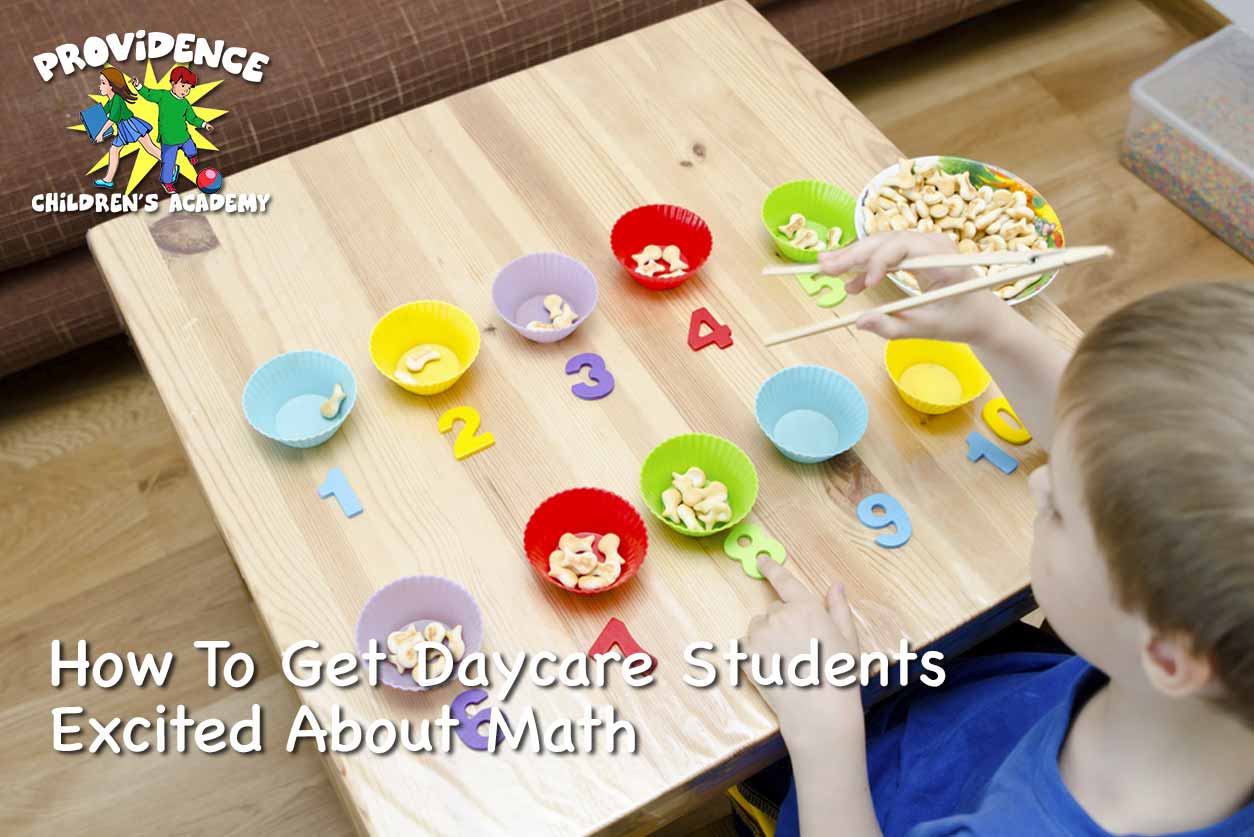
Math is a difficult subject. Not because it’s a difficult school subject, but because we can’t seem to talk about it without some heavy stigma. It is conveyed often as something “regular” kids cannot naturally enjoy. It is conveyed as something they are going to struggle with. Faced with all this, how do we begin finding a place where we can create energy and excitement for Math in children at daycare, before formal schooling starts?
The simplest answer is… Show them.
Use all the technology and toys you can – animate things they make in various ways. Show them that it’s all numbers and numbers relate to magic.
Math is a magic wand for many things! Some people will be great at it and others won’t so be sure to remind kids that more than one wand exists, even within math.
Math is Everywhere
Show them the Math they use in their daily little activities – this will make them feel like they already know about it. When building, let them count and measure. It can be in fun ways, like using the length of macaroni pieces to measure blocks or built bridges. Show them how to compare the sizes of items.
Allow for Practical Play
Ask them questions and let them work out the answers. Find a way of creating learning moments when they don’t get it right. Tell them how they are right, but how they are also wrong. This helps with critical thinking skills as well. For example, if they say they think that four macaroni pieces would fit in the block, but the real answer is eight, then let them glue things together or take them apart to see that, yes, four pieces do fit, but so do another four.
These are notions and activities that STEM aims to instill.
Talk About Math
When children are playing or completing a task, talk over how they made changes and what changes they made and let them try and explain to you why they did it and why they think it worked. Often, math is something that a child catches on to not because they play differently than other kids but because their awareness is expanded by the grown-up in the room.
The Future of Math is in the History
Incorporating history into math will introduce intrigue. Mathematicians all made absolute magic in their time. Showing old media of the way the world was before each mathematical discovery and then immediately after will etch these historical figures into memory as heroes.
You can go further by turning this into interactive storytime with changes in lighting and surroundings. Ending with the question of “What will be created next?” could lead to all the ways they can be involved in future “magic” mathematical inventions. This is helped along by always taking the time to point out the different aspects and ways of solving problems that each child has picked up on.
Earlier we spoke about the magic wand. When you imagine, your mind creates. When you use math, these creations can really be there. That is basically what mathematicians did. Knowing this may be very motivating for a child.
Use the Math They Know
We forget, and therefore kids don’t learn, that math is not only stuff you learn or something that you’re good at. It is something the brain is already doing. When art is happening, ask children to point out larger areas, guess how much bigger, ask if they could work out or explain how they know, teach them to compare using the correct words.
Remember that each thing that young children become aware of is a building block. Eventually, it will be much easier for them to see that Math is just symbolism and representation of what they see around them.
Math is Logic and Art Combined
Using string art, kids can see the effects of the changes they make and actively correct them in new ways.
If instructions become shape-based, then they will each have to contemplate the effect of shape on the function. This will be an enjoyable way to learn math while knowing that “mistakes” are being encouraged because they help with understanding. Allow the children to talk through each step – what they think will happen and why.
Math in Curriculum and in Play
Many parents are concerned about curriculum constraints when it comes to true and natural, and even beneficial learning.
Always keep it visual and relate them to real-life objects and activities. Mathematics labors under the weight of being theoretical only. It used to need to be learned that way, but it has been a mode of creation for this modern world and we have enough classroom-based tools available for this to be adjusted. How to make this weight lighter even further is to encourage kids to create humor that depends on math knowledge.
If not making use of a deck of cards, then bring math into play. Shopping games and other themed games are perfect areas to also allow them to exercise math skills.
Study Suggestions on Math for Young Minds
Another less obvious, more covert way to get kids excited about math is by allowing Math based learning to happen in the earlier hours of the day. This is seemingly very important to a younger mind, and less so for older children. If curriculum lessons must take place, the later parts of the day can serve to reinforce the day’s learning through activities and playtimes.
At Providence Children’s Academy, we know that kids learn best when they are part of the lesson. The lesson can’t happen to them. Math is learned by doing and engaging. We strive to show each child the way in which they are already good at math because math is important and we use it every day.
